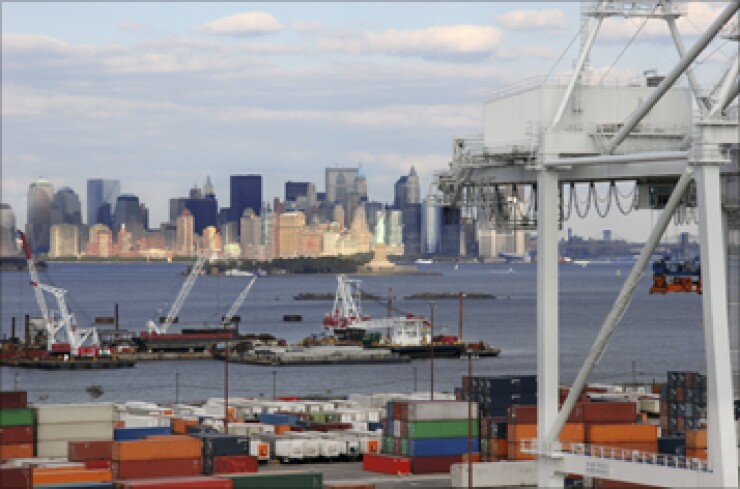The shipping industry is responsible for 90% of global trade. Large shipping losses are now at their lowest level this century having declined by over 50% year-on-year, according to
While this plummet in total losses is encouraging, the number of reported shipping incidents overall (2,698 in 2018) shows little decline – less than 1% year-on-year. An Allianz analysis of nearly 15,000 marine liability insurance claims between 2011 and 2016 reveals human error to be a primary factor in 75% of the value of all claims analyzed – the equivalent of $1.6 billion in losses. Safety-enhancing technology has been a positive factor in improving ship safety and claims, yet accidents continue to happen. Many incidents can be traced back to an overreliance on technology – even down to losses occurring from crew being on
Advances in technology have played life-saving roles already in the maritime industry. Drones have been used successfully in man-overboard (MOB) incidents. Going forward, we expect to see the automatic launching of a drone as soon as the Bridge Wing Life Ring is deployed. Drones can be equipped with a thermographic sensor to help locate the MOB by heat signature and then relay the position back to the ship. Drone use is instrumental in large tank inspections, as well as accessing spaces that are not safe for human entry.
Blockchain has been introduced in shipboard applications replacing costly legacy systems such as logs, spreadsheets, private databases and other data repositories and promises to minimize paperwork delays and costly business disruptions. Snakelike swimming “robots” are being deployed for sub-sea inspections and hull scrubbers, alleviating crew exposure to undue in-water risks. Computational fluid dynamics is being used to simulate propeller structure and determine optimal power conversion while preventing cavitation, a phenomenon in which changes of pressure in a liquid lead to the formation of small vapor-filled cavities which can collapse and generate intense shock waves that damage propellers. And, of course, autonomous shipping is set to revolutionize the industry – someday.
However, technology cannot totally replace solid navigational skills. We have seen serious losses from an overreliance on electronic chart displays and human error on the part of the crew. There is a generation of seafarers that have grown up trusting what they see on a screen. Without appropriate training to develop maritime skills and situational awareness, they can be lulled into a false sense of security. Serious losses have occurred due to such overreliance on technology. Appropriate training can help right the wrong.
Technology, while advantageous for some elements of seafaring, does not necessarily translate into safer conditions. The human element is still prevalent and ensuring that crews are well-trained in the fundamentals. Captains and crews are under increasing pressure as shipping supply chains are streamlined for greater efficiency. While vessels once spent weeks in port, turn-around times for a cargo vessel are now measured in days. And tight schedules can have a detrimental effect on safety culture and decision-making. This presents a dynamic and fast-paced environment that presents numerous challenges to loss control efforts, both from a technical as well as a behavioral standpoint.

It is also a perfect arena where properly implemented technology can have a tremendous impact on losses. There is considerable value to be realized from both a financial as well as quality of life standpoint. Much of the heavy lifting is already being done; the maritime industry just needs to fully utilize the data that is already available. At present, vast quantities of data are captured by sensors, recorders and human input – yet are not being analytically applied to the degree that they can help increase efficiencies or decrease risk. One of the most important goals is to start to utilize this data to help the industry operate safer. The root of this issue is to modify the behavior of both shipboard and shore side vessel operators as well as other key operators in the supply chain.
Vessels do not operate in a vacuum. Instead they are critical links in our supply chains, and this fact must be acknowledged and factored into any improvement efforts. The shipping industry is part of the global economy and as such it is culturally diverse. It is important that we acknowledge that fact in any corrective actions that are implanted.
Shipping companies that rely on cameras to “catch” crew members may find this to be a poor use of technology over time. While sensor technology and monitoring are poised to have a tremendous impact in risk management and vessel safety, companies should avoid a “1984 Big Brother” approach that could ostracize the crew or, worse, lead to possible litigious activity around privacy concerns. Taking a punitive approach is unlikely to foster a meaningful change in the behavior of shipboard personnel.
For too long in the maritime sector, the industry has only studied losses and used them as the key to developing training criteria and lesson plans. A key reason for this was the fact that it took tremendous effort to capture and analyze voyage data, and it was only done in the event of loss. Given the current state of available sensors and recorders, and the potential of additional development, that no longer needs to be the case. We now have the opportunity to learn from successful voyages. Not only does this address the implicit outcome bias that current investigations may fall victim to, but it also will help identify behaviors that can be used for successful behavior modeling.





